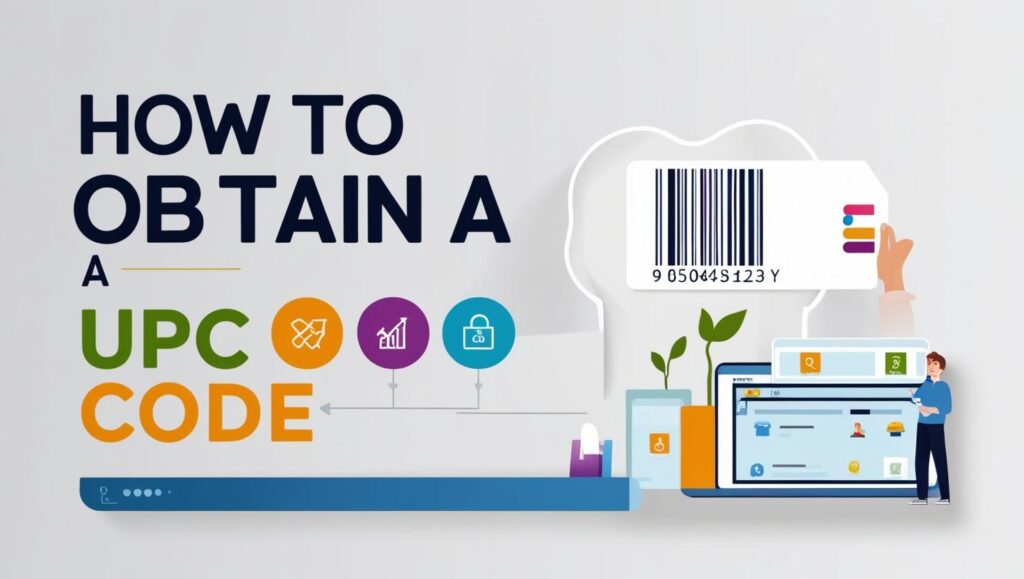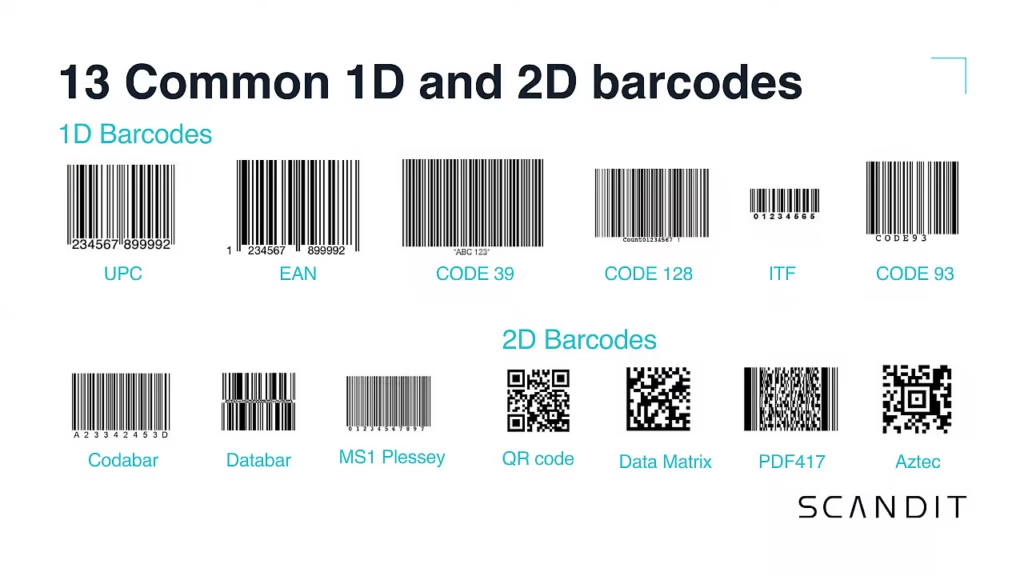
Have you ever noticed the small barcode on products in stores? That’s a UPC code1, and it plays a crucial role in the retail world. Let’s dive into what it is and why it’s so important.
A Universal Product Code (UPC) is a unique identifier for products, used globally to track and manage inventory. This barcode helps businesses and retailers streamline their operations, ensuring accurate and efficient transactions.
As a business owner, I learned early on that getting a UPC code for my products is essential for smooth operations. Here’s a closer look at how to get one, what it tells you, and the differences between related terms.
How do you get a UPC code?
The process of getting a UPC code might seem complicated at first, but it’s actually pretty simple once you know where to start. Here’s a breakdown of the steps involved.
To obtain a UPC, businesses need to register with GS12, the global standard for barcodes. This organization assigns a unique prefix to each company, which forms the foundation for generating UPCs for individual products.

When I first started, I was unsure about how to even get a UPC. After a bit of research, I found out that the first step is registering with GS1. GS1 is an organization that maintains the global standards for barcodes, and they’re responsible for issuing unique identification numbers to businesses.
Once registered, a company receives a prefix, which is essentially a number that identifies them as the product manufacturer. This prefix is critical, as it is the foundation for all UPCs related to your company. For example, when you sell different products, each one will need a unique number in addition to the prefix. This ensures that retailers and inventory systems can distinguish between various items.
After receiving the prefix, creating the actual UPC code is simple. There are tools available to help businesses generate UPCs, but if you prefer, you can use third-party services. I used a barcode generation tool when I was setting up our product catalog, and it was straightforward.
The important thing to remember is that each product variant needs its own unique UPC. So, if you sell multiple sizes or colors of the same product, each version needs a different UPC code. This helps ensure that retailers and customers can easily identify and track the exact product version.
What does a UPC tell you?

A UPC code does more than just identify a product. It contains essential information that helps businesses manage their inventory, track sales, and improve overall efficiency.
The UPC is made up of 12 digits3, each with a specific purpose. The first six digits represent the manufacturer, the next five digits identify the product, and the final digit is a check digit for accuracy.
When you scan a UPC, it doesn’t just give you a simple number; it’s a system that’s integral to how businesses operate. Let’s break down what the digits in a UPC code represent. The first six digits are the manufacturer number, which is issued by GS1. This number identifies the business that created the product, making it unique to that manufacturer.
The next five digits in the sequence represent the specific product. This is where you’ll find the product ID that distinguishes one item from another. For example, if you sell two sizes of the same product, these five digits will be different to reflect the size variation.
The final digit is called the check digit. It’s a form of error-checking, ensuring that the UPC code is scanned correctly. This digit is calculated using a specific algorithm that checks if the rest of the UPC is accurate. This check is critical for ensuring smooth transactions at the checkout, and it reduces scanning errors.
Retailers use UPCs to verify prices and track inventory. The UPC helps systems pull up all relevant product information, from the price to the description. It also allows businesses to monitor sales in real time, making inventory management more efficient.
What is the difference between a barcode and a UPC code?
At first glance, a barcode and a UPC code may seem like the same thing, but there are key differences. Let’s clarify what sets them apart.
A UPC code is a specific type of barcode4, but not all barcodes are UPC codes. Barcodes can be used for various purposes, while UPCs are primarily used for tracking products in retail.

It’s easy to confuse barcodes with UPC codes, but understanding the difference is important for any business involved in product sales. A barcode5 is a visual representation of data that can be scanned. It’s a broad term that encompasses many types of codes used for various purposes, from product tracking to asset management.
On the other hand, a UPC code is a specific type of barcode, typically 12 digits long, used in retail. It’s designed to track and identify products quickly and efficiently. While all UPC codes are barcodes, not all barcodes are UPC codes. For instance, QR codes6 and other types of barcodes might be used for marketing or tracking purposes, but they do not have the same structure or function as a UPC.
A UPC code is designed to be universally recognized, especially in retail environments. Its main function is to help streamline product transactions, inventory management, and pricing. In contrast, barcodes may be used for internal tracking or by industries that do not require the same standardization as retail businesses.
Comparison between Barcode and UPC Code
| Feature | Barcode | UPC Code |
|---|---|---|
| Definition | A generic term for scannable codes | A type of barcode used in retail |
| Length | Varies (e.g., 8, 13 digits) | 12 digits |
| Purpose | Product tracking, asset management, etc. | Product identification and pricing in retail |
| Standardization | Not globally standardized | Globally standardized for retail |
What is the difference between UPC and SKU?
While UPC and SKU codes both help with product identification, they serve different purposes. Here’s a closer look at the distinctions between the two.
UPC codes are standardized identifiers used globally in retail, while SKUs (Stock Keeping Units) are unique codes used by businesses to manage inventory internally. UPCs are universal, but SKUs are specific to a company.
The main difference between a UPC and an SKU lies in their purpose and scope. UPC codes are globally recognized, standardized identifiers used to track products in retail. They are essential for retailers, wholesalers, and suppliers to easily identify products. The UPC code is used at checkout and in inventory management systems to ensure accuracy in pricing, stock levels, and sales.
An SKU7, however, is a unique code created by a company for its own inventory management purposes. It’s not standardized and may differ from one company to another. SKUs are internal tools that help businesses organize products within their own systems. Unlike UPC codes, SKUs are not used universally across the industry; they’re specific to each business.
For example, if your company sells multiple variations of a product, the UPC would remain the same across all retailers, but your internal SKU might differ to help you track different versions of the product within your business. SKUs allow businesses to track stock levels, monitor sales trends, and improve supply chain efficiency.
Comparison between UPC and SKU
| Feature | UPC Code | SKU |
|---|---|---|
| Standardization | Globally standardized | Company-specific |
| Purpose | Product identification for retailers | Internal inventory management |
| Use | Retail and distribution | Internal tracking and organization |
Conclusion
Understanding UPC codes is crucial for businesses looking to sell products in retail. These codes ensure smooth operations, accurate inventory tracking, and efficient transactions. Getting your products registered with UPCs is one of the most critical steps in managing a successful business.
-
This link helps you understand the full meaning of a UPC code and its usage in product identification. ↩
-
Explains the role of GS1 in barcode standards and how businesses can register for UPC prefixes. ↩
-
Provides a deeper dive into how UPC codes are structured and how they work for product identification. ↩
-
Provides an explanation of barcodes and how they differ from UPC codes. ↩
-
Explains the different types of barcodes and their diverse applications beyond product tracking. ↩
-
Clarifies the difference between QR codes and UPC codes, highlighting their distinct uses. ↩
-
Offers a deeper explanation of SKU codes and how they are used for internal inventory management. ↩

